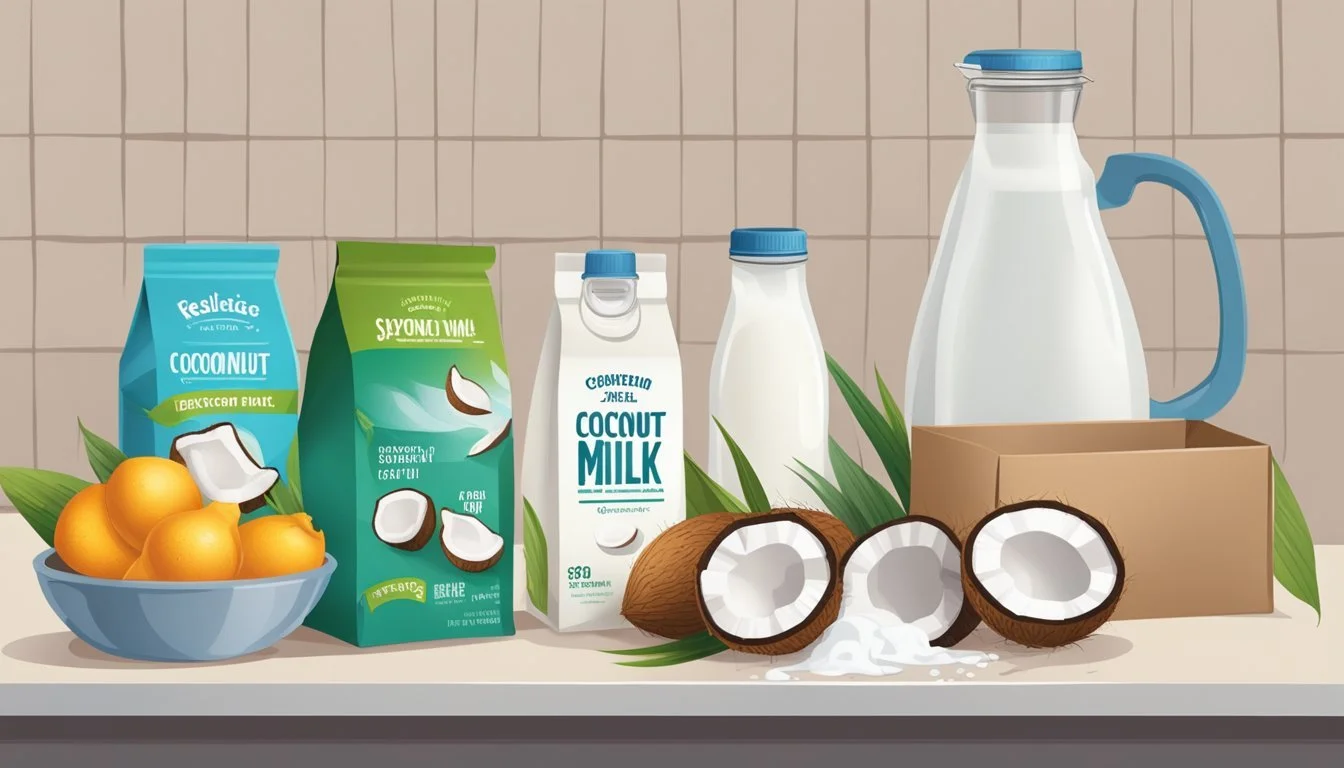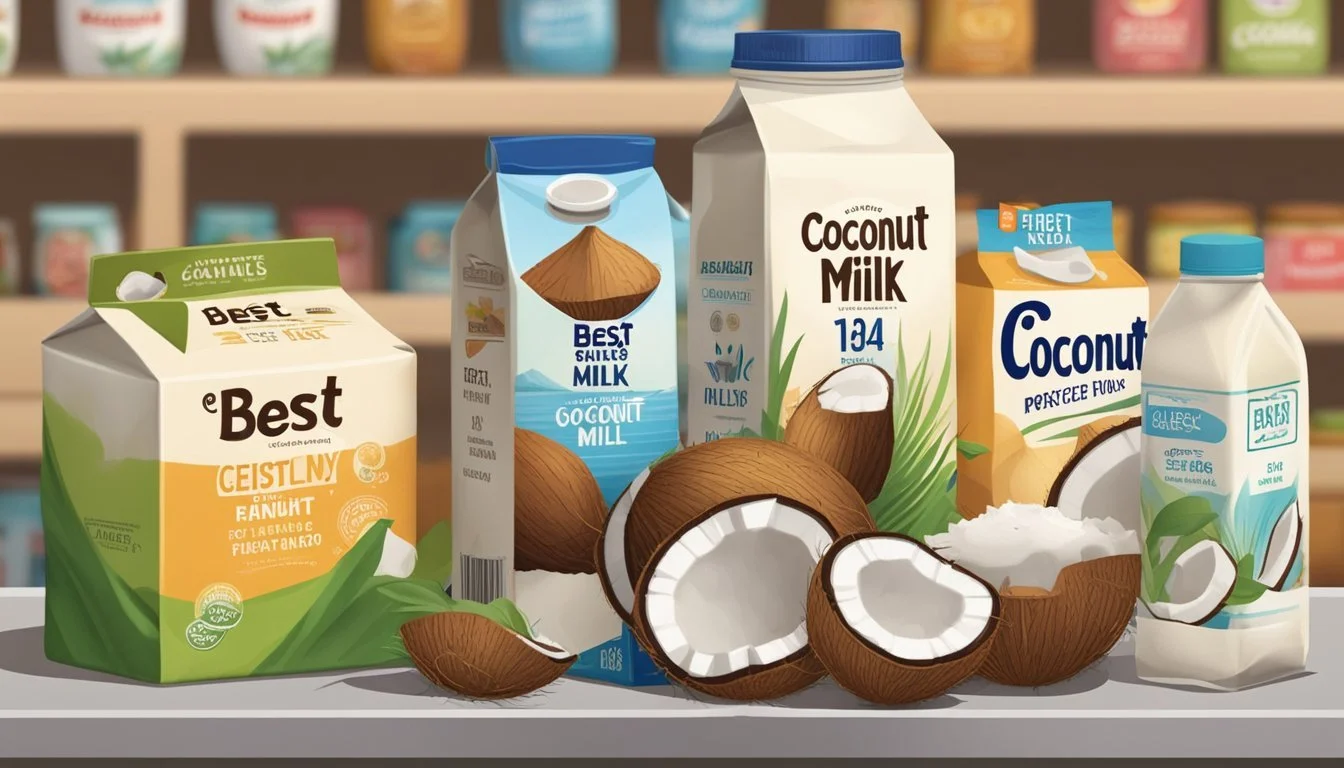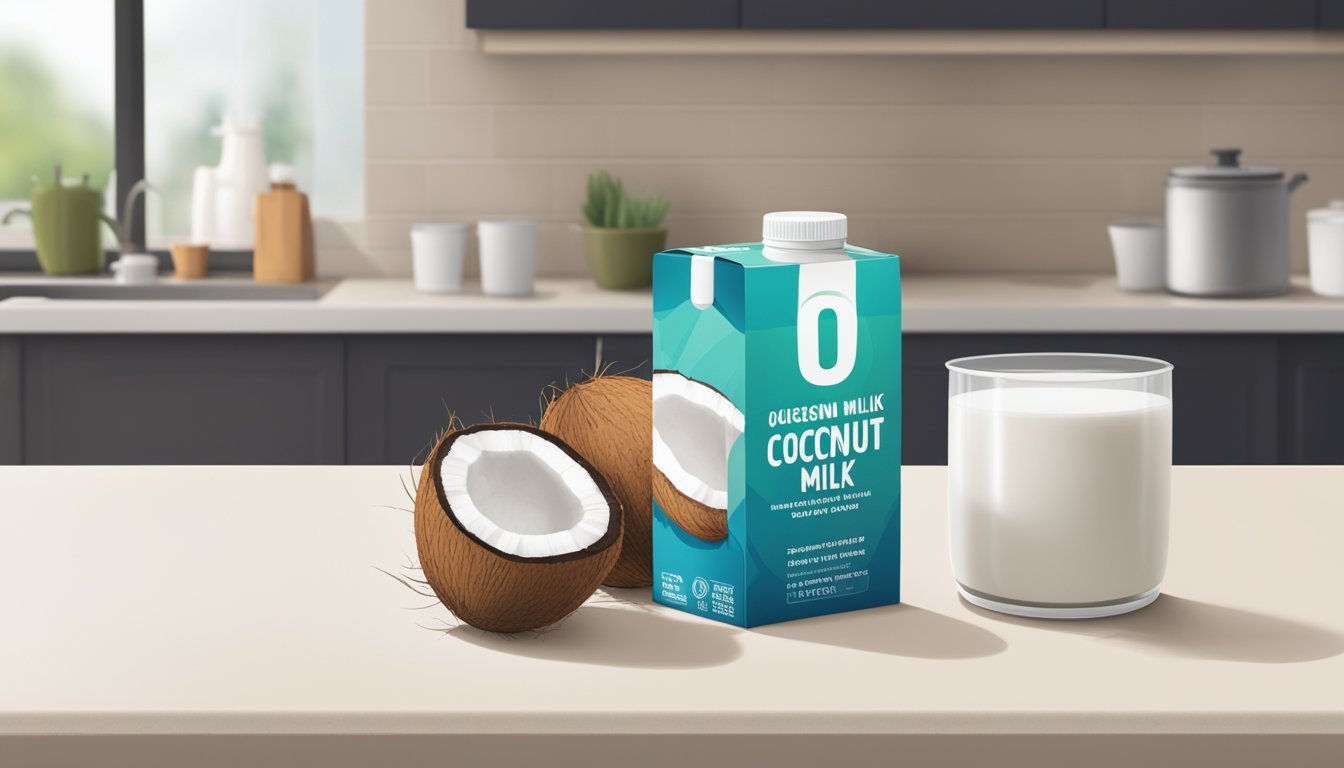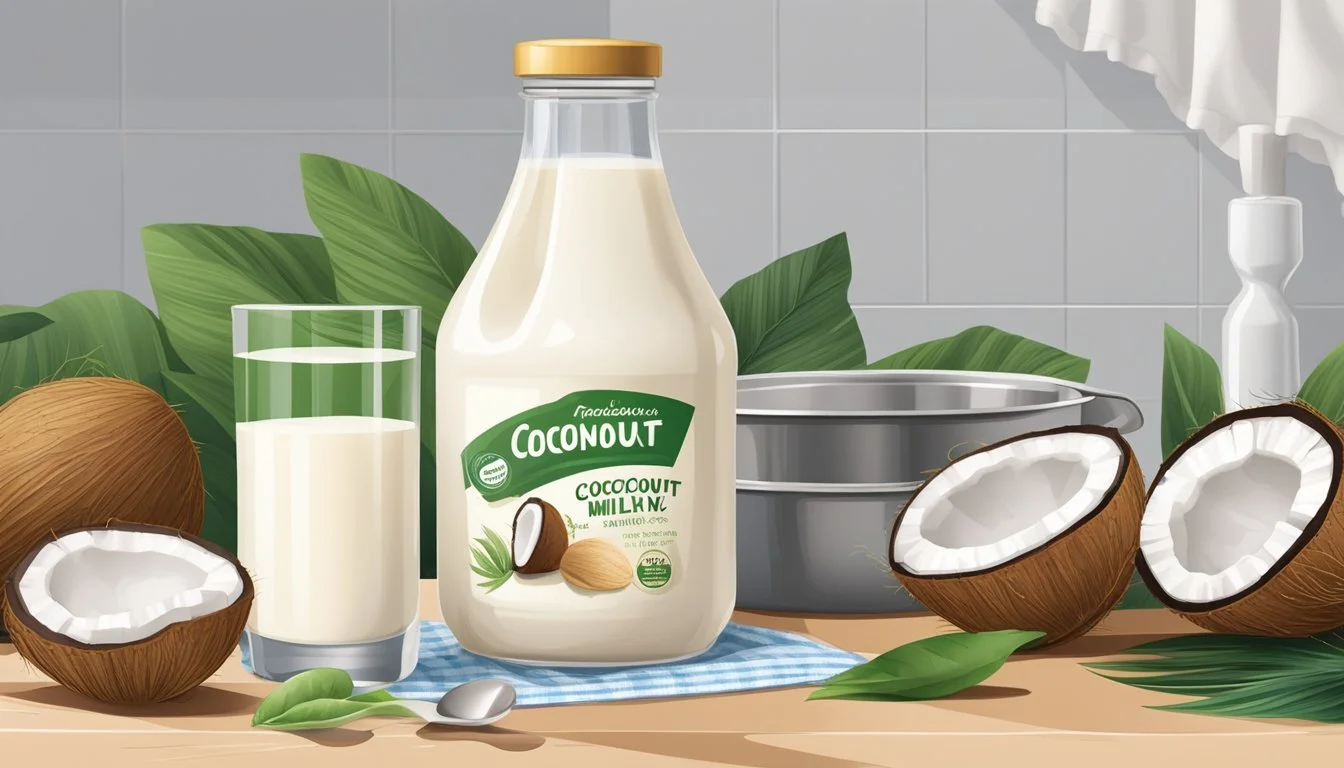Does Coconut Milk (Carton) Go Bad?
Shelf Life and Storage Tips
Coconut milk, a versatile and popular dairy alternative, can indeed go bad. When stored in a carton, it typically lasts 5 to 10 days after opening if kept refrigerated. Beyond this period, the quality and freshness of the milk can decline significantly.
Indicators that coconut milk has spoiled include a sour smell, mold growth, and a chunky or curdled appearance. Proper storage is crucial; keeping the carton in a cool, dark place before opening and refrigerating promptly afterward can help extend its shelf life.
Unopened cartons of coconut milk should be stored in a dry, cool environment away from direct sunlight. Once opened, transferring it to an airtight container can also help maintain its freshness.
Understanding Coconut Milk
Coconut milk comes in various forms, each with unique characteristics and uses. Additionally, it offers a range of nutritional benefits that make it a popular dairy substitute.
Types of Coconut Milk
Coconut milk is commonly found in two primary forms: carton and canned. Carton coconut milk is usually diluted and is often fortified with vitamins and minerals, making it suitable for direct consumption and as a dairy milk substitute. Canned coconut milk tends to be thicker and more concentrated, typically used in cooking to add richness to dishes.
Coconut cream is a thicker version of coconut milk with higher fat content, used in recipes needing a creamy texture. Coconut water, on the other hand, is the clear liquid found inside the coconut and is distinct from coconut milk in its uses and nutritional properties.
Nutritional Profile
Coconut milk, whether in a carton or can, is a good source of essential nutrients. Commonly, it contains medium-chain triglycerides (MCTs), which are fats that might be easier to digest. Carton coconut milk often has added calcium, vitamin D, and vitamin B12, making it more nutritionally comparable to dairy milk.
Coconut cream has higher fat content and is richer in calories. Both canned and carton coconut milk typically offer fewer carbohydrates compared to almond milk and are free from lactose, making them suitable for those with lactose intolerance.
In summary, coconut milk provides a versatile and nutritious dairy substitute.
Storage Guidelines
Proper storage of coconut milk in cartons extends its shelf life and maintains its quality. Key factors include storing in the right environment and using appropriate containers.
Ideal Storage Conditions
Carton coconut milk should be kept in a cool, dry place before opening. Avoid exposing it to direct sunlight or high temperatures, which can spoil the milk even before the expiration date. The ideal temperature for storage is between 50°F and 70°F (10°C to 21°C).
Once opened, immediately transfer the coconut milk to a refrigerator. Use an airtight container to prevent it from absorbing any odors from other foods. Always check that the seal on the carton is intact before storage.
Refrigeration and Freezing Practices
Refrigeration extends the life of opened coconut milk. It should generally be consumed within 7-10 days. For refrigeration, make sure the coconut milk is kept in a sealed container to maintain its quality.
Coconut milk can also be frozen for extended use. Pour the milk into ice cube trays or freezer-safe bags to freeze. Label the date of freezing, and it can last up to 3 months in the freezer. Thaw frozen coconut milk overnight in the refrigerator before use.
Pantry vs. Refrigerator Storage
Unopened cartons can be stored in the pantry. This storage method is suitable only if the pantry remains cool and dry, away from heat sources. A pantry should maintain a consistent temperature below 70°F (21°C) for optimal storage.
Once opened, coconut milk must transition to the refrigerator. While pantry storage is good for unopened cartons, refrigeration is essential after opening. Using a sealed container in the refrigerator helps to prevent cross-contamination and retains the milk's flavor and texture.
Shelf Life and Expiration
Coconut milk in cartons has a notable shelf life which can vary based on various factors. It's essential to understand expiration dates and what affects the longevity of your coconut milk.
Recognizing Expiration Dates
The expiration date on a carton of coconut milk serves as an essential guide to its freshness. Manufacturers typically print this on the packaging, and it’s crucial to take note of it.
Expiration Dates:
Unopened cartons usually have a shelf life of 6 to 12 months.
Once opened, it should be consumed within 7 to 10 days.
Proper storage affects this timeframe significantly.
Expired coconut milk can spoil, developing off-smells and unpleasant tastes, which signal it's time to discard. Checking dates regularly ensures that the milk is safe to consume and retains its quality.
Shelf Life Determinants
Several factors influence the shelf life of coconut milk in cartons. The use of preservatives and stabilizers in the formulation helps extend its longevity. Additionally, the type of packaging plays a crucial role.
Key Shelf Life Factors:
Aseptic Packaging: This method helps keep coconut milk fresh longer by preventing bacterial contamination.
Storage Conditions: Keeping cartons in a cool, dry place before opening and refrigerating after opening is crucial.
Handling Practices: Minimizing exposure to air and contaminants when using the milk extends its freshness.
Properly storing and handling the milk ensures it remains safe to consume and maintains its best quality for a more extended period.
Signs of Spoilage
When it comes to carton coconut milk, recognizing signs of spoilage is key to ensuring safety and usability. Key indicators include visual changes, off smells, and altered taste and texture.
Visual Inspection
Start with a visual inspection to identify any obvious spoilage. Discoloration is a common sign; fresh coconut milk should have a consistent white or off-white color. Any yellowing or browning could indicate spoilage.
Look for mold or unusual clumps forming. Molds can appear as green, white, or black spots and are clear indicators that the coconut milk is no longer safe to consume.
If the coconut milk appears curdled or has separated unnaturally, it might have gone bad. Natural separation can occur, but it should mix back smoothly when shaken.
Olfactory Cues
Smell the coconut milk to detect spoilage. Fresh coconut milk should have a pleasant, slightly sweet, and nutty aroma.
If it emits a sour or rancid smell, this is a strong sign of spoilage.
Sometimes, spoiled coconut milk can also have a musty or metallic odor. These changes in smell are caused by bacterial growth and should not be ignored.
Taste and Texture
Perform a taste test if visual and olfactory cues are ambiguous. Fresh coconut milk should taste mildly sweet and nutty. If the taste is sour, bitter, or just off, it has likely spoiled.
Check the texture as well. Fresh coconut milk should have a smooth, creamy consistency. If it feels gritty, slimy, or clumps in your mouth, these are signs that it has gone bad.
By paying close attention to these signs, you can better ensure the safety and quality of your coconut milk. Proper storage can also extend its shelf life and maintain its freshness.
Safety and Health Considerations
When consuming coconut milk from a carton, it's essential to be mindful of food safety and potential allergic reactions. Addressing these concerns helps ensure a safe and enjoyable experience.
Avoiding Food Poisoning
Food poisoning can result from consuming spoiled coconut milk containing harmful bacteria. It's crucial to refrigerate coconut milk after opening to prevent bacterial growth. If left at room temperature or exposed to high humidity for extended periods, the risk of contamination increases significantly.
Signs of spoilage include sour smell, bloated packaging, and changes in texture or color. Always inspect the product and avoid consuming if any of these indicators are present. Transfer the milk to an airtight container to maintain freshness and store it properly.
Allergic Reactions and Sensitivities
Although coconut milk is generally safe, some individuals may experience allergic reactions or sensitivities. Symptoms can range from mild itching and hives to severe anaphylaxis. Those with tree nut allergies should exercise caution, as coconut can sometimes trigger similar reactions.
Check product labels for any additional allergens or cross-contaminations. It's advisable for individuals with known allergies to conduct a patch test or consult a healthcare provider before consuming coconut milk. Being aware of and responding to potential allergens is vital to maintaining health and safety.
Utilizing Coconut Milk in Cooking and Recipes
Coconut milk in a carton offers a versatile ingredient for numerous culinary uses. From savory dishes to smoothies and desserts, this dairy-free milk substitute provides distinct flavor and texture options.
Cooking with Coconut Milk
Carton coconut milk can enhance both sweet and savory recipes. In savory dishes like coconut curry, it adds a creamy texture and rich flavor that pairs well with spices and vegetables. Vegan recipes often incorporate coconut milk as a substitute for dairy, maintaining creaminess without animal products.
When cooking, its thinner consistency compared to canned coconut milk must be considered. It can be used as a base for soups, sauces, and marinades. By adjusting quantities, it creates the desired richness. Examples include using it for soup bases in Thai or Indian cuisine or thickening sauces for stir-fries.
Recipe Applications
Smoothies benefit from the light and refreshing taste of carton coconut milk. It blends seamlessly with fruits and greens, creating a smooth and creamy drink. Desserts such as cakes, puddings, and ice creams can also use this milk to maintain moisture and add tropical flavor.
In baking, carton coconut milk can replace cow's milk in recipes, ensuring vegan options are up to par. This can be done in pound cakes, muffins, and pancakes. Using carton coconut milk in these applications enhances the texture and introduces a subtle coconut flavor that complements various ingredients. It’s especially useful for those seeking dairy-free alternatives without sacrificing taste or consistency.
Extending Coconut Milk's Life
To keep your carton of coconut milk fresh for as long as possible, focus on proper storage techniques. This involves freezing and other alternative methods that help maintain quality and extend usability.
Freezing Techniques
Freezing coconut milk is an effective way to extend its shelf life. First, transfer the coconut milk into an airtight container, leaving some space at the top as the liquid expands when frozen.
Ice cube trays are useful for freezing small, manageable portions. Pour coconut milk into the trays and freeze. Once solid, transfer the cubes to a freezer bag. This method allows for convenient use in smoothies, curries, and other recipes without thawing the entire container.
Properly frozen coconut milk can last up to 3 months. Thaw in the refrigerator or use directly in cooking, especially in heated dishes since the texture may change slightly after freezing.
Alternative Storage Solutions
Storing coconut milk properly before freezing can also help extend its life. Unopened cartons should be kept in a cool, dark place such as a pantry. Once opened, refrigerate the carton immediately and use it within 4-6 days.
For longer periods, consider vacuum sealing the coconut milk. This method removes air, which can prolong freshness by slowing down spoilage.
Another option is to transfer coconut milk into glass jars with tight-fitting lids before storing in the fridge. Glass prevents any interaction between the container and the milk, thereby preserving quality.
Cultural and Regional Uses
Coconut milk, especially from cartons, features prominently in various regional cuisines and has global applications. These uses highlight its versatility and cultural significance.
Coconut Milk in Southeast Asian Cuisine
In Southeast Asia, coconut milk is a staple ingredient, often used fresh. Thai, Malaysian, and Indonesian dishes frequently rely on it for texture and flavor. For instance, traditional Thai curries like Tom Kha Gai use coconut milk for a creamy, rich taste.
Fresh coconut milk often plays a key role in desserts. In the Philippines, Ginataang Bilo-Bilo, a sweet warm dessert, uses coconut milk. Similarly, Malaysia’s Kaya, a coconut jam, incorporates it as a base ingredient.
Laksa, a spicy noodle soup found in several Southeast Asian countries, gets its creamy broth from coconut milk. This highlights coconut milk’s importance not only in flavor but also in the regional identity of many dishes.
Global Uses of Coconut Milk
Beyond Southeast Asia, coconut milk has found a place in kitchens worldwide. In the Caribbean, coconut milk features in rice dishes like Jamaican Rice and Peas. It provides a rich and aromatic base that complements spices and legumes.
In Indian cuisine, particularly in coastal regions, coconut milk is essential. Kerala’s famous mango curry uses coconut milk for a unique, creamy texture. Similarly, in southern Indian states, fresh coconut milk is used in Payasam, a traditional sweet dish.
In Hawaiian cuisine, coconut milk can be found in dishes like Haupia, a coconut pudding. It’s also used in beverages like Piña Colada, a popular cocktail that highlights the creamy texture and tropical flavor of coconut milk.
Conclusion
Coconut milk in cartons does go bad, and several factors influence its shelf life.
Storage condition is crucial. Unopened cartons can be stored in a cool, dry place. Once opened, it must be refrigerated and typically lasts for seven to ten days.
Packaging is another factor. Some cartons contain stabilizers like guar gum, which can help preserve texture but not necessarily prevent spoilage.
Signs of spoilage include an off smell, mold presence, or changes in appearance. If the coconut milk develops an unusual consistency or separates more than usual, it might be spoiled.
Always check the expiration date, but remember that improper storage practices can make coconut milk go bad even before this date. If you are uncertain, it's safer to discard it.







